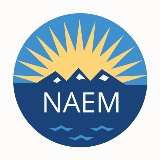Transforming Sustainability Principles into Sustainable Products
 Parynaz Mehta
Parynaz MehtaFor healthcare products and pharmaceutical giant Johnson & Johnson, an environment, health and safety review is embedded within the new product development process. This week we spoke with Parynaz Mehta, Senior Manager of Product Stewardship for the company’s Medical Devices & Diagnostics division to understand how product stewardship transforms sustainability principles into sustainable products.
GT: How do you define product stewardship at Johnson and Johnson?
PM: For us, product stewardship is making sure that we offer environmentally compliant and sustainable products to our customers, and we do that by looking at the entire life cycle of our products. So right from designing the product to be compliant, to picking the right type of materials to picking the right type of packaging to making sure that we try to offer our customers solutions for end-of-life type of issues, and making sure that we try to offer end-of-life options to our customers.
Product stewardship is just one pillar of the overall sustainability strategy, which also includes working with our suppliers and external manufacturers to expand the definition of sustainability beyond our fence. So we work in partnership with our suppliers and external manufacturers, and we also engage our internal customers in conversations around sustainability. So how do we get our own employees excited? And what can they do at the local level within our facilities for sustainability? We also engage with telling our sustainability stories externally. We engage with customers, we engage with nongovernmental organizations (NGOs) and other interested groups to talk about sustainability outside.
GT: What is the relationship between product compliance and product stewardship?
PM: Compliance is the first step of the product stewardship process. It’s like the foundation, the bed rock. The number one objective of our product stewardship team within medical devices and diagnostic team is to make sure that everything we design and everything that we put on the market is fully compliant.
GT: You said Product Stewardship is a team effort. Who is responsible for Product Stewardship at Johnson and Johnson?
PM: At the enterprise level, sustainability is owned by worldwide environment, health and safety (EHS). That’s the corporate department that drives sustainability and product stewardship. At the sector level, I lead the product stewardship for the Medical Devices and Diagnostics sector and I report in through the Senior Director for EHS.
GT: How have initiatives like product stewardship changed the relationship between EHS and product design?
PM: We work very closely with research and development (R&D) teams. Actually, at Johnson & Johnson, the EHS assessment, the ‘design for environment’ assessment has always been embedded in the R&D process. There’s a whole process map that R&D follows where it has certain stage gates, and for the past ten years or more, there has been a well-established stage gate for a design for environment review. (That name is a little bit misleading because it’s actually a product stewardship/EHS review.) We have now re-branded the ‘design for environment’ term internally and are calling that our ‘earth words’ process. So when we do new product development, we have a stage gate when we engage with our R&D teams to have the conversations around "What’s in your product? What are the materials that we’re going to be using? What are the manufacturing processes? Where is this going to be manufactured? What’s the packaging going to look like? How is it going to be disposed of?" Wherever we can, we try to engage with those teams to drive the sustainability conversation.
Topics:
Compliance Excellence
Sustainability
Related
About the Author

NAEM Staff
The National Association for Environmental, Health and Safety, and Sustainability (EHS&S) Management (NAEM) empowers corporate leaders to advance environmental stewardship, create safe and healthy workplaces and promote global sustainability. As the
leading business community for EHS&S decision-makers, we provide engaging forums, a curated network, peer benchmarking, research insights and tools for solving today’s corporate EHS&S management challenges. Visit us online at naem.org.

